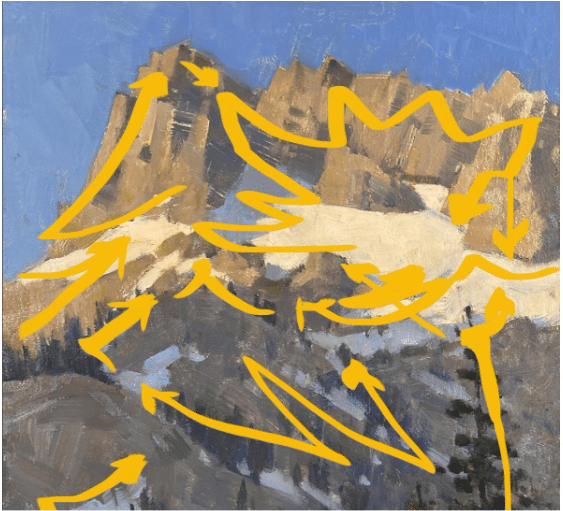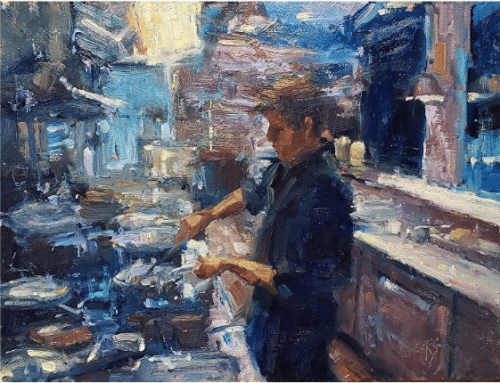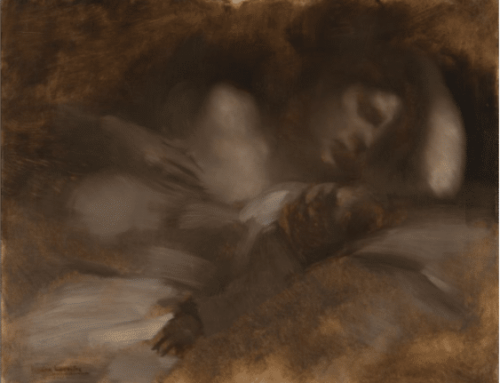Especially strong in design, Paul Kratter’s paintings skillfully compose light, atmosphere, and expression of emotion. Paul comes from an illustration background that instilled strong drawing and design skills and a robust belief in graphic shapes and storytelling. His compositions are nearly always dynamic and often unique.
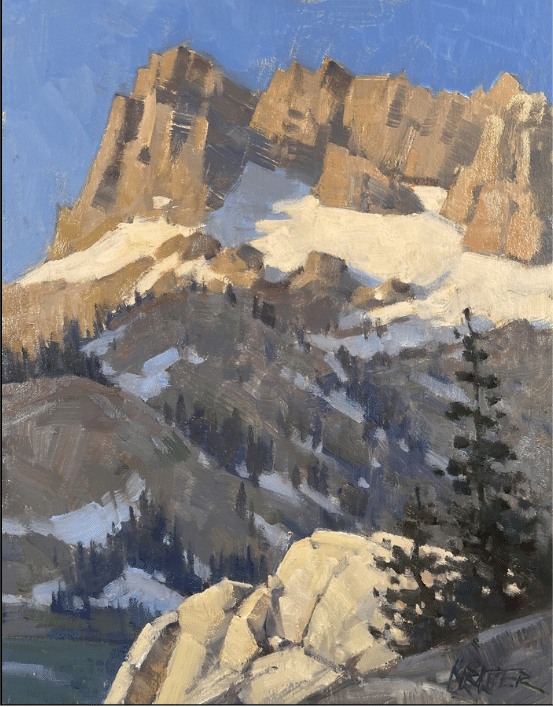
Paul Kratter, “Sunrise!” Oil on linen, 8” x 10”
Take “Sunrise!” (above). This painting, by placing the perspective’s horizon line particularly low in the composition, makes the mountain come into its own strength and glory. Though the directional brushstrokes in the foreground rocks bring us in, the pockets of snow direct our eyes toward the summit, where the rising sun strikes the rockface like an echoing refrain.
If we map our eyes’ movements as we study the painting, we can uncover what we can call “directional rhythms” – the various directions the edges and lines point us through the painting.
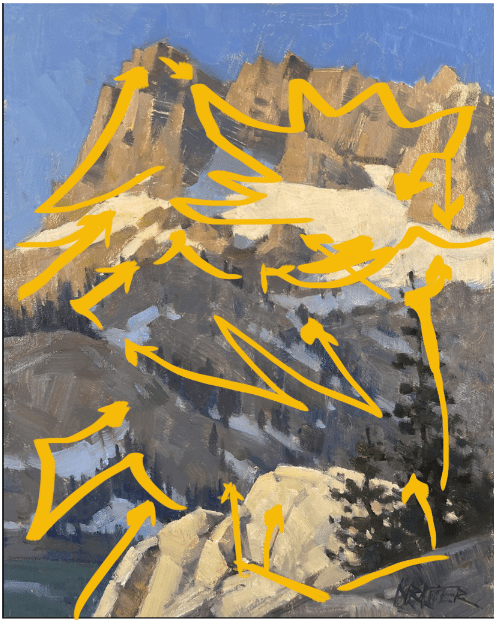
Diagramming directional rhythms in Paul Kratter, “Sunrise!” Oil on linen, 8” x 10”
All lines in a painting are directional in that they act like arrows telling the viewer where to look next. Kratter’s “Sunrise!” gains energy from the dynamic way his
As an exercise, try making a quick sketch of each of the following paintings and diagram the directional rhythms based on where you find your eyes traveling as you study the original paintings by Paul Kratter.
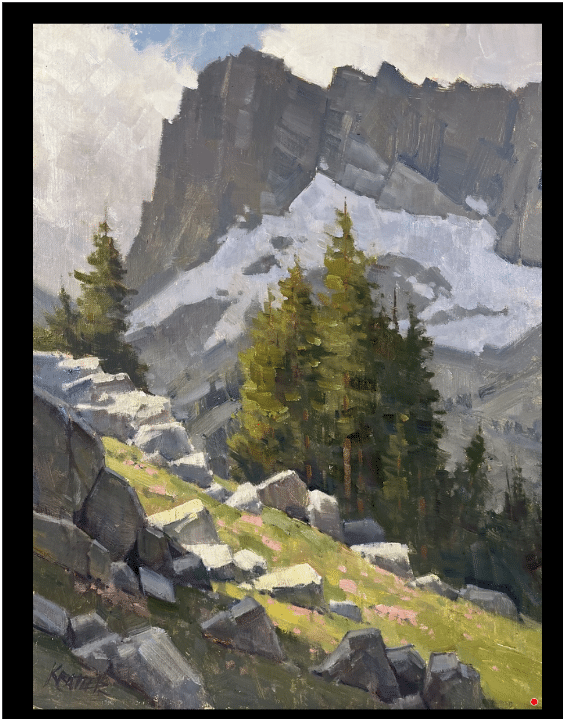
Paul Kratter, Slice of Light, oil on panel, 12 x 9 in.
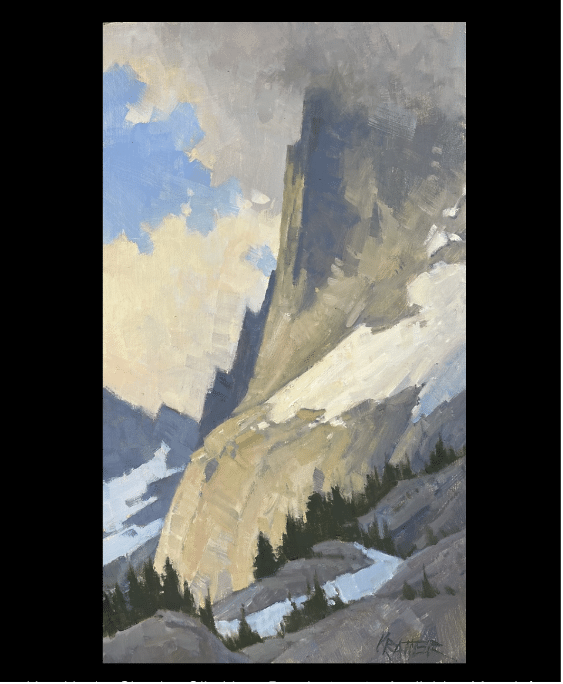
Paul Kratter, Head in the Clouds, oil on panel, 12 x 9 in.
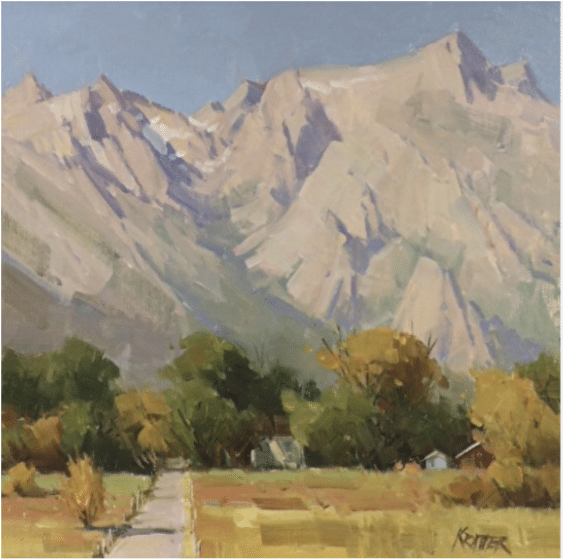
Paul Kratter, oil on panel, 12 x 16 in.
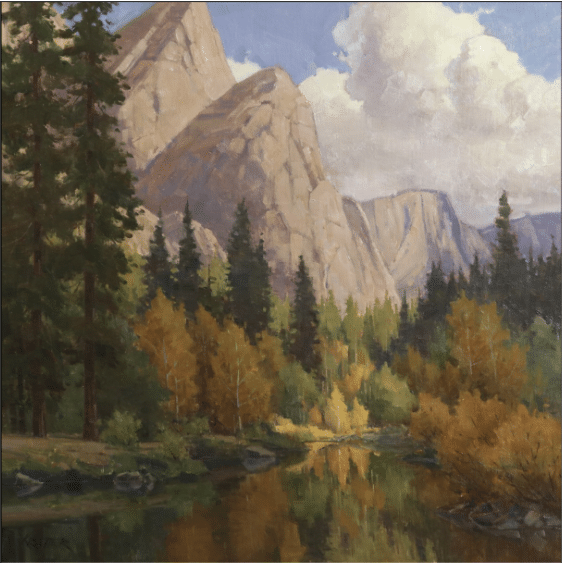
Paul Kratter, Brothers Gold, oil on panel, 16 x 16 in.
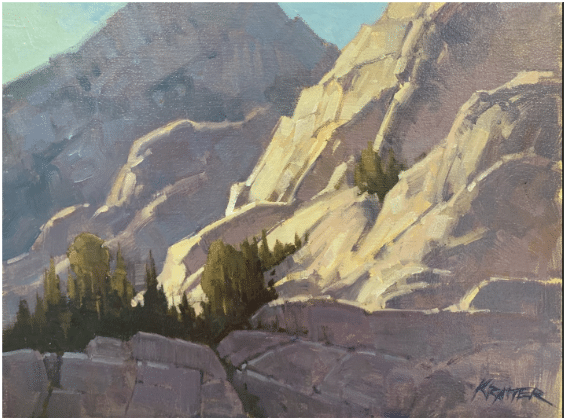
Paul Kratter, oil on panel, 12 x 9 in.

Paul Kratter on location with one of his plein air paintings on linen mounted to panel
Paul Kratter teaches his go to design principles for composing his paintings in his video, Landscape Painting & Design.
If you like the mountains, this year’s PACE may be for you. The Plein Air Convention and Expo is taking place in the Smoky Mountains May 20-24, 2024. It’s five days with over 80 top landscape artists. Check it out!
Near Pristine Paintings Emerge from Pompeii
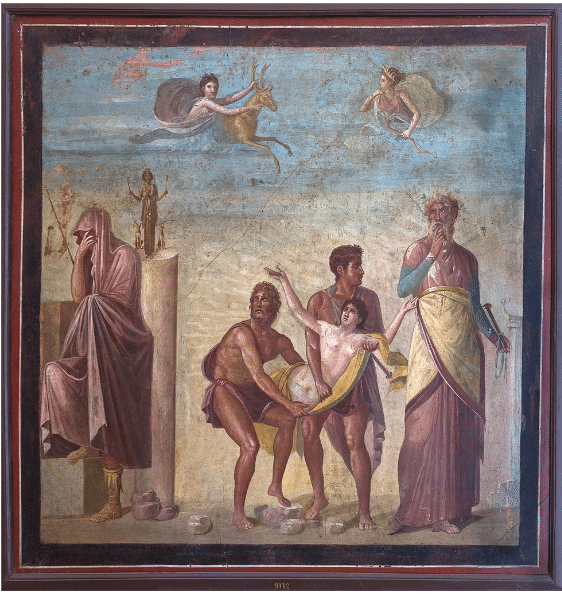
Fresco from The House of the Tragic Poet (also called The Homeric House or The Iliadic House),a Roman residence in Pompeii, Italy dating to the 2nd century BCE.
We know the ancient Greeks and Romans made paintings, but until recently we knew relatively little what they looked like except from spotty descriptions in surviving literature. Not much made of fabric or wood can survive 2000 years under ground. But when visual art fuses with architecture, we get a much better picture.
The roots of Western painting lie mostly in the Renaissance excavation of the art, especially the bronze and marble sculptures, of Greece and Rome. So, it’s a fascinating development to see remarkably well-preserved paintings emerging now from the city of Pompeii, where the art’s been “frozen in time” beneath 23 feet ash since the volcanic eruption of Mount Vesuvius in 79 A.D.
These paintings aren’t oil on canvas, though. These are frescos, in which the artist painted water-based pigments into a layer of still-wet plaster to the wall.
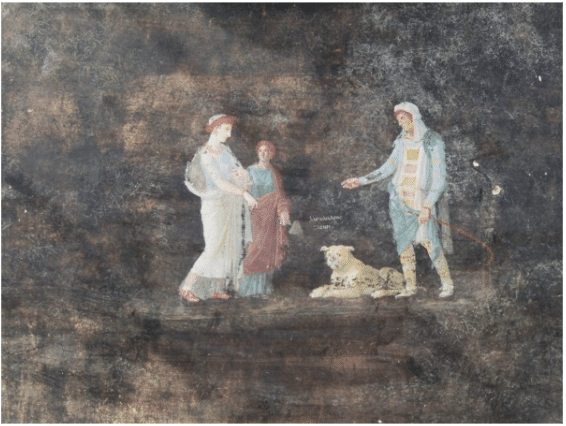
A fresco depicting Helen of Troy with Paris, identified as “Alexandros,” with a third figure was found among other works of art in a Pompeiian banquet hall. (all images courtesy Parco Arcaeologico di Pompei)
Archaeologists in the ongoing Pompeii excavation have just uncovered a stunning group of exceptionally preserved frescoes in a banquet hall that occupied a fashionable block in the heart o the ancient city.
The paintings depict scenes from Greek mythology and literature, particularly episodes relating to the Iliad, Homer’s account of the Trojan War.
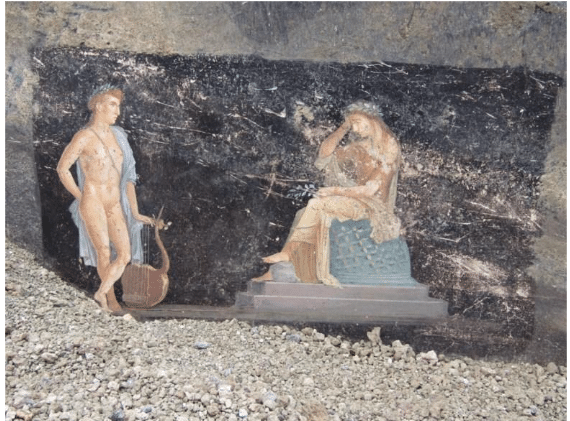
Pompeiian fresco in which the god Apollo stands before the unwilling Cassandra, who has raised her hand to her forehead, perhaps because she has received the curse of ineffectual foresight.
In one painting the god Apollo, leaning on his symbolic lyre, stands before Cassandera, the Trojan priestess of Athena. Tryig to impress, Apollo gave her the power of prophecy. Cassandra turned him down, but since no act of the gods be undone, he applied a curse so that no one would take her foresight seriously. She foresaw the Trojan war coming aw the result of her brother’s abduction of Helen, but was unable to prevent it because no one believed her. Another fresco shows Helen’s parents; here, the god Zeus takes the form of a swan to seduce Leda, the Spartan princess who would birth the famous girl, whose “face would launch a thousand ships.”
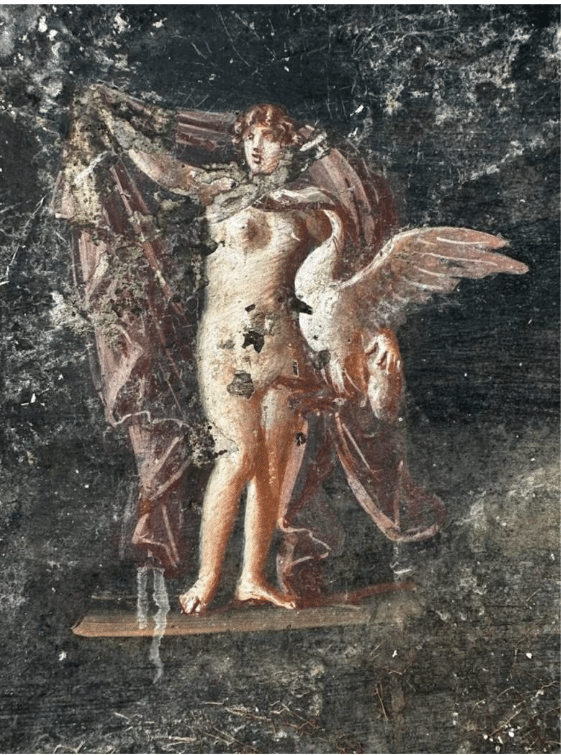
The fresco of Zeus’s seduction of Queen Leda of Sparta by taking the form of a swan

